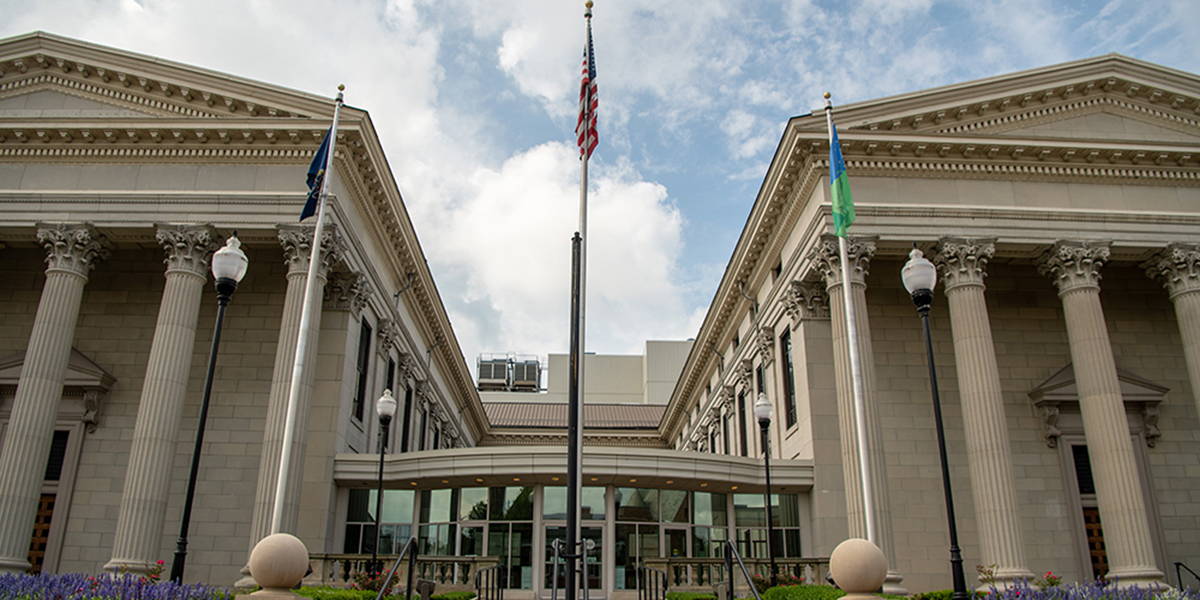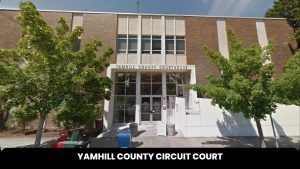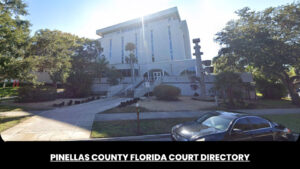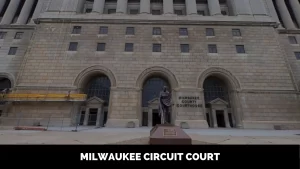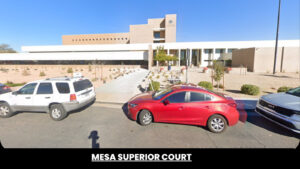erie county courthouse
Introduction to Erie County Courthouse
The Erie County Courthouse in Buffalo, New York has been an important center of government and judicial proceedings for over a century. The courthouse building has served Erie County since the late 1800s and is considered an architectural treasure of the area. Let’s take a closer look at this historic building, its background, architecture, purpose, and significance.
Brief History and Overview
Construction on the Erie County Courthouse began in 1871, replacing an earlier courthouse building that had been destroyed by fire. The new courthouse was designed in the Second Empire architectural style and opened in 1876. For over 140 years, it has been home to Erie County government offices, agencies, and courts. Numerous additions and renovations have taken place over the decades to expand and update the building. The courthouse occupies an entire city block in downtown Buffalo.
Architectural Significance
The Erie County Courthouse is considered one of Buffalo’s most important surviving examples of Second Empire architecture. Its mansard roof, arched windows, ornate exterior, and historic interior spaces reflect this popular 19th century style. The courthouse was designed by prominent Buffalo architect Andrew Jackson Warner. Its construction, design details, and surviving historic integrity make it architecturally significant in Western New York.
Location and Geography
The courthouse is centrally located in downtown Buffalo on Delaware Ave at West Eagle Street. It sits adjacent to other government buildings like Buffalo City Hall and across from Lafayette Square. The building’s central locale reinforces its role as a vital center of civic life in Erie County. The courthouse is accessible to pedestrians and public transit and sees high daily visitor traffic.
Courthouse Exterior
The courthouse exterior exhibits defining features of Second Empire architecture with its distinct silhouette and ornamentation.
Architectural Style and Design
The building rises 3.5 stories and occupies a full city block. It is primarily constructed of stone and brick. Distinctive Second Empire elements include the signature mansard roof with elaborate dormer windows and decorative brackets under the eaves. The facade features tall, arched windows accented by molded stone trim. Other exterior details include Corinthian columns, classical ornamental motifs, and a prominent central pavilion.
Materials Used
The courthouse incorporates durable, high-quality materials like cut stone, brick, granite, slate, and wood. Vermont granite comprises the first floor facade. Sandstone and brick from local Western New York quarries form the upper stories. Slate for the mansard roof was sourced from Maine and eastern Canada. Period construction techniques and craftsmanship are exhibited throughout.
Notable Exterior Features
Some striking exterior features include the imposing three-story portico with Corinthian columns at the main Delaware Ave entrance and the prominent central dome rising above the mansard roof. The open park setting around the courthouse also allows it to be viewed from all sides. Architectural sculpturework, cornices, and other period detailing create visual interest on the building’s exterior.
Courthouse Interior
The interior of the Erie County Courthouse contains ornate period design as well as more modernized spaces. Visible layers of history tell the building’s ongoing story.
Floorplan and Layout
The courthouse floorplan consists of four stories totaling around 170,000 square feet. The first floor holds county offices along with courtrooms for Erie County Court and Buffalo City Court. Upper floors contain a mix of courtrooms, judges’ chambers, and county department offices connected by corridors. The layout has evolved through various expansions and renovations over time while retaining many original spaces.
Courtrooms
Most courtrooms feature traditional 19th century detailing like stained oak wainscoting, coffered plaster ceilings, and brass light fixtures. Modern upgrades like lighting and audiovisual systems have been installed as needed without compromising historic fabric. The building contains over a dozen courtrooms of varying sizes used by different courts. Certain ornate ceremonial courtrooms are occasionally opened for special proceedings.
Historical Spaces
The Erie County Courthouse holds a number of spaces with historic and architectural significance. These include the central five-story rotunda capped by a stained glass skylight dome, the marble grand stairway, and public lobbies adorned with stonework and ornamental plaster. Many original interior finishes like mosaic tile floors, brass railings, and wood doors enrich the period atmosphere.
Renovations and Changes Over Time
While the core historic courthouse has remained largely intact, some modernizing changes have occurred. A 1910 addition expanded the Delaware Ave side, and further expansions took place in the 1950s-60s. Updates like new lighting, security systems, and ADA accessibility have been implemented as needed. Efforts are made to blend renovations into the existing architecture and retain a sense of the building’s long history of continuous use.
Courthouse Purpose and Usage
As the seat of county government, the Erie County Courthouse serves many civically vital purposes.
Government Offices and Agencies
The courthouse building provides offices and facilities for numerous county government functions. These include the County Executive, County Legislature, County Clerk, District Attorney, Public Defender, Probation Department, Board of Elections, and various divisions and departments. Centralizing county services in an historic landmark building allows citizens to access multiple agencies at a familiar, convenient downtown location.
County Services
In addition to departmental offices, the courthouse offers public county services like obtaining marriage licenses, paying property taxes, registering legal documents, obtaining passports, and accessing genealogy records. The building’s customer service windows assist thousands of Erie County residents and visitors with these important services annually.
Courtrooms and Legal Proceedings
Most prominently, the courthouse facilitates judicial operations for the county court system. Its historic courtrooms provide appropriate settings for dispensing justice through trials, hearings, and other legal proceedings. Courts housed here include Erie County Court, Buffalo City Court, Family Court, and Surrogate’s Court along with supporting staff like the District Attorney’s office. The courthouse enables these courts to serve the community effectively.
Notable Events and Cases
With over a century of county history within its walls, the Erie County Courthouse has been the site of many noteworthy trials, verdicts, and proceedings.
Famous Trials
The courthouse held high-profile murder trials like those of Albert T. Patrick, tried for killing William Marsh Rice in 1901, and of Leon Czolgosz, assassin of President William McKinley that same year. These sensational cases attracted nationwide media coverage. More recently, the building hosted part of the “Lackawanna Six” terrorism trial concluding in 2003.
Important Verdicts and Decisions
Beyond murder trials, many decisions significantly impacting the region have been handed down here. Examples include verdicts awarding restitution to Love Canal area residents over toxic waste issues in the 1990s and convicting Byron Brown’s former deputy mayor for election law violations in 2008. Judicial rulings issued from this courthouse have helped shape the legal landscape locally.
Historical Proceedings
The courthouse stands as a silent witness to over a century of county history. Everything from naturalization ceremonies for new citizens to swearing in prominent elected officials have occurred within its walls. Events like installation ceremonies for new Erie County judges connect moderncommunity happenings back to the courthouse’s rich past.
Significance to Erie County
As an architectural landmark and hub of civic activity, the Erie County Courthouse holds deep meaning for the county’s identity and heritage.
Center of County Government
The courthouse provides a centralized seat of power for county-level governance that has endured since the 1800s. Executive, legislative, and judicial authority for Erie County all emanate from this historic building. Its commanding architecture reinforces the stability and seriousness of activities conducted within.
Architectural and Historical Importance
Beyond functioning as county government headquarters, the courthouse as a structure holds architectural and historical importance. It represents Buffalo’s post-Civil War renaissance and stands as a rare surviving example of Second Empire design. The courthouse embodies skilled 19th century craftsmanship and materials at a grand scale. As a usable building rather than just a relic, the courthouse lets people interact with history.
Role in Community
For Erie County residents, the courthouse often represents public access to government services and accountability. Its location and purpose situate it as a true people’s building where citizens address elected officials, fulfill civic duties, and invoke their rights in an impartial venue. The courthouse remains a community gathering place, from naturalization ceremonies to public meetings.
Restorations and Preservation
Given its architectural significance, efforts have ensured this National Register-listed building remains preserved for future generations.
Efforts to Maintain Building
Early restoration work came in the 1930s with roof repairs and exterior masonry cleaning. More comprehensive interior and exterior restoration projects were completed from the 1970s through 1990s. Restorations have maintained historic materials and finishes while integrating modern upgrades for continued functioning. Funding has come from grants and the county budget to complete this work.
Funding and Support
Major past supporters have included the federal Historic American Buildings Survey, the New York State Historic Preservation Office, and non-profits like the Landmark Society of Western New York. Residents who value local history have also advocated for courthouse preservation over the years. Ongoing maintenance relies on continued funding commitments from Erie County.
Future Plans
Upcoming plans are focused on modernization like technology upgrades along with restoring historic lighting and finishes in the building’s public spaces. Work will continue striking a balance between upgrading functional systems while respecting the courthouse’s historic fabric. Keeping this landmark actively used also honors community heritage.
Courthouse Accessibility: Ensuring Equal Access to Justice
Courthouses play a pivotal role in ensuring justice is served, making them essential institutions in any society. However, for justice to be truly accessible, courthouses themselves must also be accessible to all individuals, including those with disabilities or specific needs. This article dives into the critical topic of courthouse accessibility, shedding light on the measures in place to accommodate everyone and promote a fair judicial process.
Understanding Courthouse Accessibility
Accessibility isn’t just a convenience; it’s a fundamental right that empowers every individual to participate fully in society. For courthouses, this means providing an environment where anyone can access legal proceedings, regardless of physical or sensory limitations. Navigating through a courthouse should never be a barrier to seeking justice.
Accessible Services and Resources
Recognizing the needs of the hearing-impaired, many courthouses, including the Circuit Court of Cook County, offer assistive services such as earphones. These earphones allow individuals with hearing impairments to follow court proceedings more effectively. If you require such assistance, the Presiding Judge’s Office can provide the necessary earphones upon request. For further information or help, don’t hesitate to contact the Fifth Municipal District’s Office of the Presiding Judge at 708-974-6290 or 312-603-6673 (TTY).
Parking Facilities for Persons with Disabilities
Physical accessibility is equally crucial. Courthouse visitors with disabilities often face challenges when it comes to parking. To address this, the courthouse has taken the initiative to reserve 24 parking spots exclusively for persons with disabilities. These designated spots are conveniently located on the north side of the courthouse, with access from 76th Avenue.
The Role of the Courthouse Clerk
The commitment to accessibility extends to the courtroom clerks as well. If you require hearing-impaired earphones, you can make a request through the courtroom clerk. They will promptly place an order for the earphones, ensuring you have the necessary tools to engage with the proceedings effectively. This role of the clerk showcases the commitment of the courthouse to accommodate accessibility needs.
Promoting Inclusivity and Equal Access to Justice
Beyond the immediate convenience, accessible courthouses contribute to a more inclusive and just society. When everyone, regardless of their abilities, can engage with legal processes, the foundation of justice is strengthened. Courthouses that prioritize accessibility foster an environment where everyone feels respected and empowered.
Steps Towards Improved Courthouse Accessibility
Efforts to enhance courthouse accessibility continue to evolve. These include features like ramps, elevators, and clear signage to guide visitors. By addressing both physical and sensory barriers, courthouses can become truly welcoming spaces for all individuals. Continuous improvements in these areas demonstrate a commitment to progress and inclusivity.
Legal Considerations and Regulations
The importance of courthouse accessibility is recognized not just ethically, but legally as well. Various regulations and standards exist to ensure that courthouses adhere to accessibility requirements. This legal framework underscores the significance of providing equal access to justice for all.
The Children’s Advocacy Room at Bridgeview Courthouse
In our journey to explore the realm of courthouse accessibility, we must not overlook the unique needs of our youngest community members. The Children’s Advocacy Room at the Bridgeview Courthouse stands as a testament to the commitment of ensuring that all individuals, regardless of their age, have access to a fair and accommodating judicial process. This article delves into the significance and offerings of this remarkable initiative, highlighting its positive impact on young individuals and their caregivers.
A Haven for Children and Caregivers
Located within the Bridgeview Courthouse at 10220 South 76th Avenue, Room 235, Bridgeview, Illinois, the Children’s Advocacy Room has been a source of support and solace for families since its opening in August 2010. This designated space has been thoughtfully designed to cater to the needs of children and caregivers who find themselves within the courthouse premises.
Comprehensive Child-Focused Services
The Children’s Advocacy Room is not just a space; it’s a haven that recognizes the unique challenges faced by families navigating the legal system. It’s not uncommon for caregivers to be accompanied by young children while conducting court business. In such situations, the room provides child life and educational child care services. These services create a safe and secure environment where children, ranging from infants to ages 16, can engage in meaningful activities while caregivers tend to their legal obligations.
Nurturing Development and Comfort
Legal proceedings can be both emotionally and mentally taxing for adults, and this strain often extends to young children as well. The Children’s Advocacy Room takes a holistic approach by offering not only supervision but also engaging activities that promote development and comfort. This thoughtful arrangement ensures that children can find a sense of normalcy amidst what could otherwise be a daunting and unfamiliar environment.
Fostering Inclusivity and Accessibility
The presence of the Children’s Advocacy Room is a testament to the courthouse’s commitment to inclusivity. It acknowledges that access to justice should be a reality for every member of the community, irrespective of age. By creating an environment where caregivers can attend to their legal matters without worrying about their children’s well-being, the courthouse contributes to a more accessible and accommodating justice system.
Empowering Caregivers and Strengthening Communities
The Children’s Advocacy Room is not merely a space for children; it’s a support system for caregivers as well. By offering child care services, the room empowers caregivers to focus on their legal obligations, knowing that their children are cared for in a nurturing environment. This empowerment extends to the community at large, as caregivers are better equipped to engage in legal processes when they have a reliable space for their children.
A Step Towards a More Accessible Future
In conclusion, the Children’s Advocacy Room at the Bridgeview Courthouse stands as a shining example of how the justice system can adapt to meet the needs of every individual it serves. By prioritizing the well-being of children and caregivers, the courthouse showcases its dedication to creating an inclusive and accessible environment. As we celebrate initiatives like the Children’s Advocacy Room, we take a step closer to a future where everyone, regardless of age, can participate in the legal process with dignity and ease.
Conclusion
The Erie County Courthouse stands as both an architectural treasure and enduring seat of local government. For over 140 years, through restoration and continuous use, the courthouse has maintained its 19th century elegance while facilitating modern functions. This landmark provides Western New Yorkers with an accessible connection to regional history and civic identity. Although past courthouses had fallen to fire or decay, the current Erie County Courthouse endures as a visible legacy for future generations.
FAQs
What architectural style is the Erie County Courthouse?
The courthouse was designed in the Second Empire style, as evidenced by its mansard roof, arched windows, classical ornamentation, and other details.
When did construction on the courthouse begin?
Construction on the current courthouse building started in 1871, replacing an earlier structure destroyed by fire. The new courthouse opened in 1876.
What government functions happen at the courthouse?
The courthouse houses Erie County government departments, services, and courts. County executive, legislative, and judicial operations are all based out of this building.
What famous trials happened at the courthouse?
High-profile trials at the courthouse include those of assassin Leon Czolgosz, Albert T. Patrick, and members of the “Lackawanna Six” terrorism case.
Why is historic preservation of the courthouse important?
Preserving the Erie County Courthouse maintains an architectural and historic landmark. It also allows continued community access to an enduring civic space.

